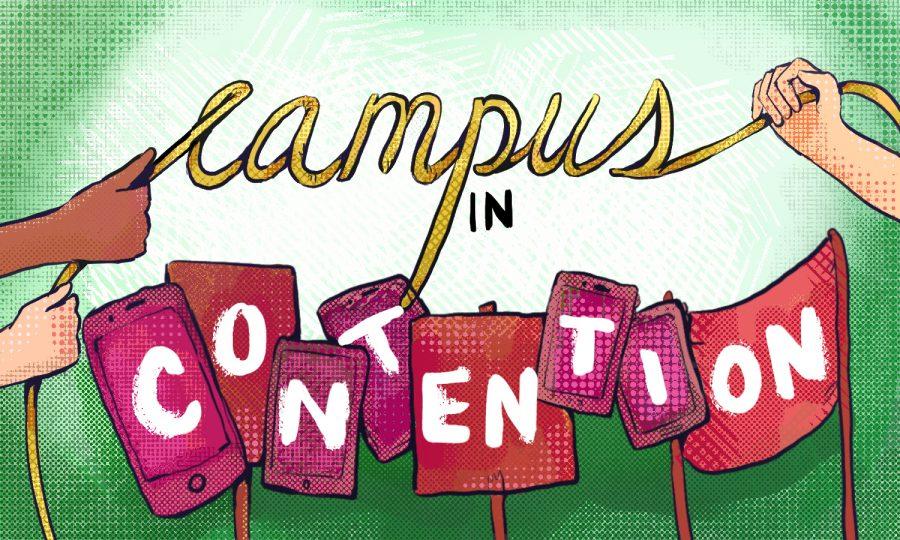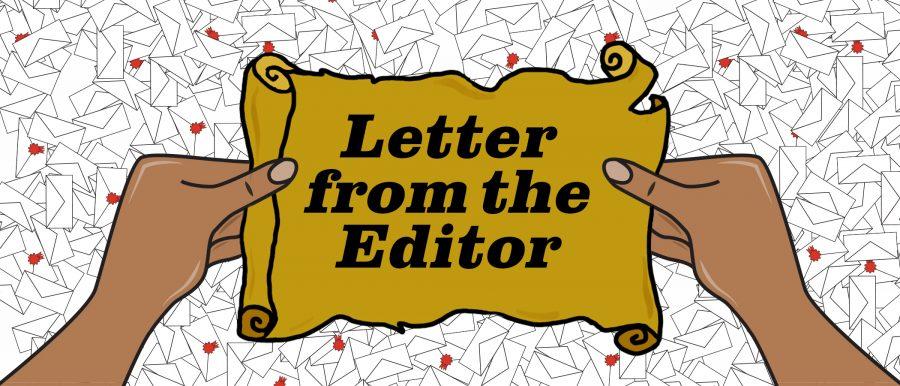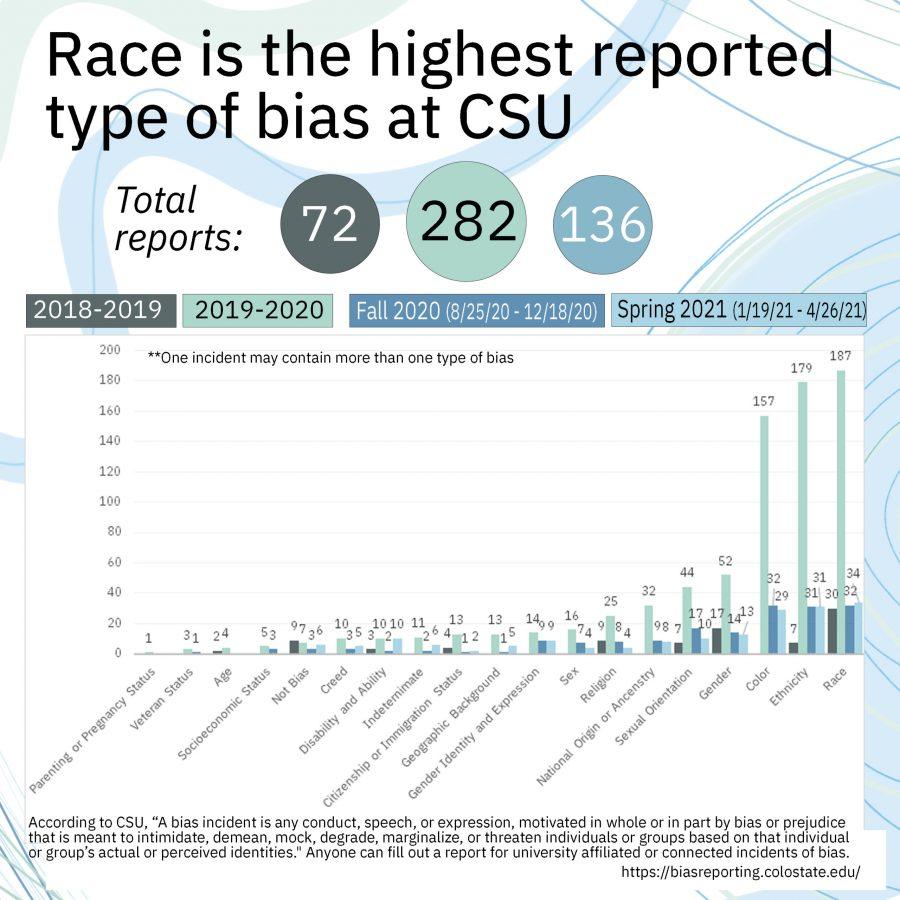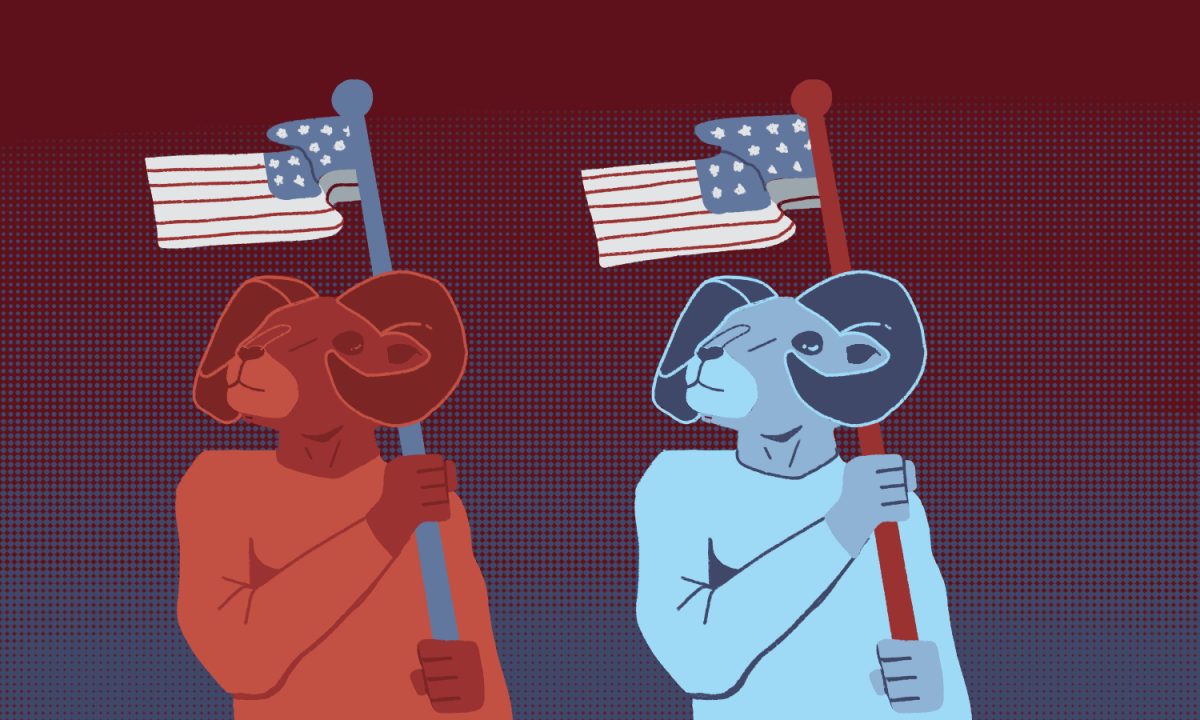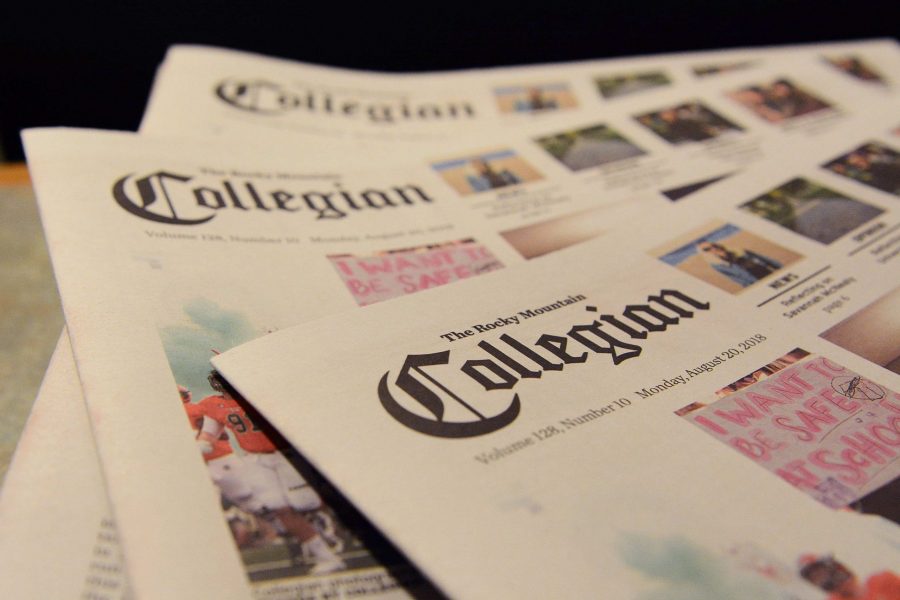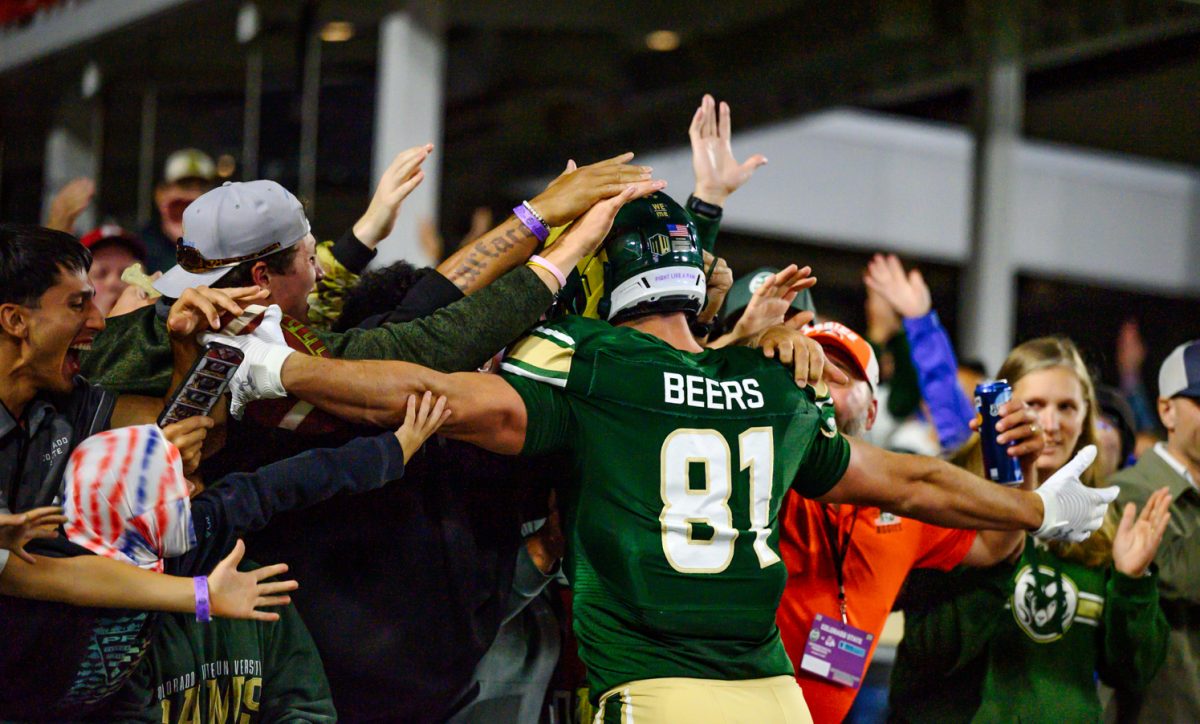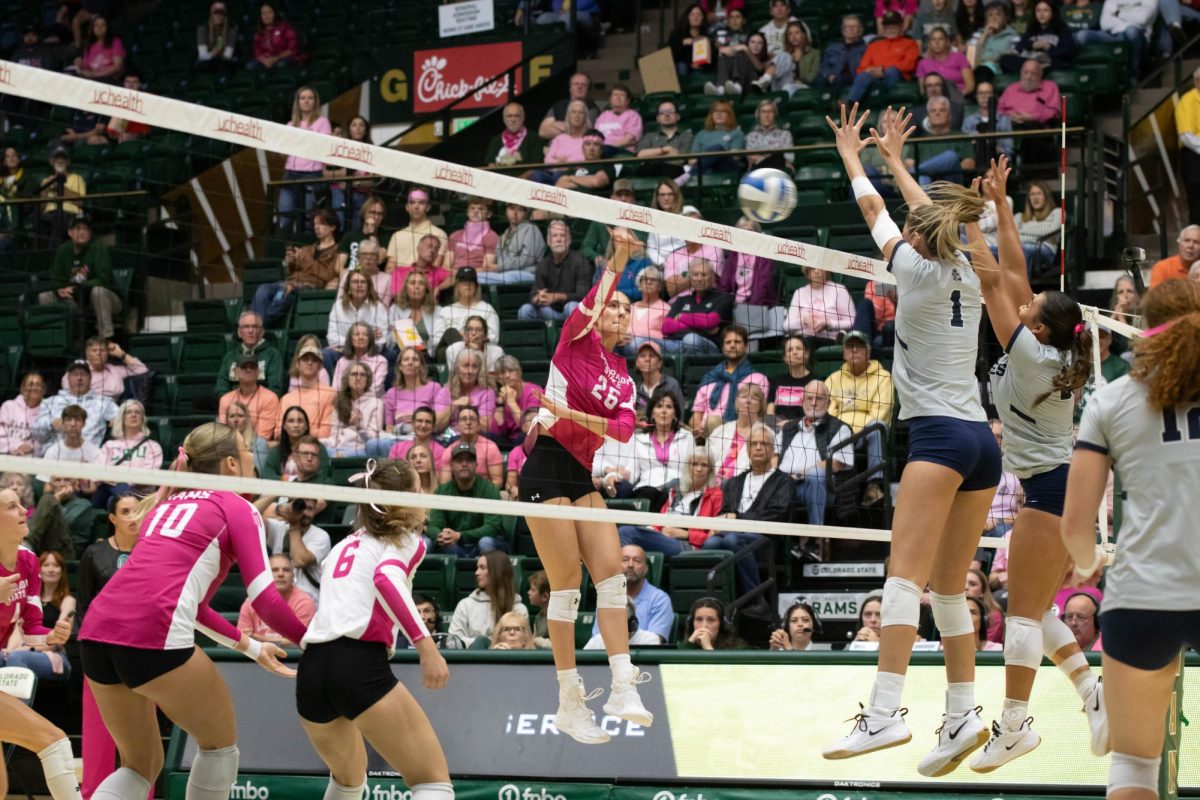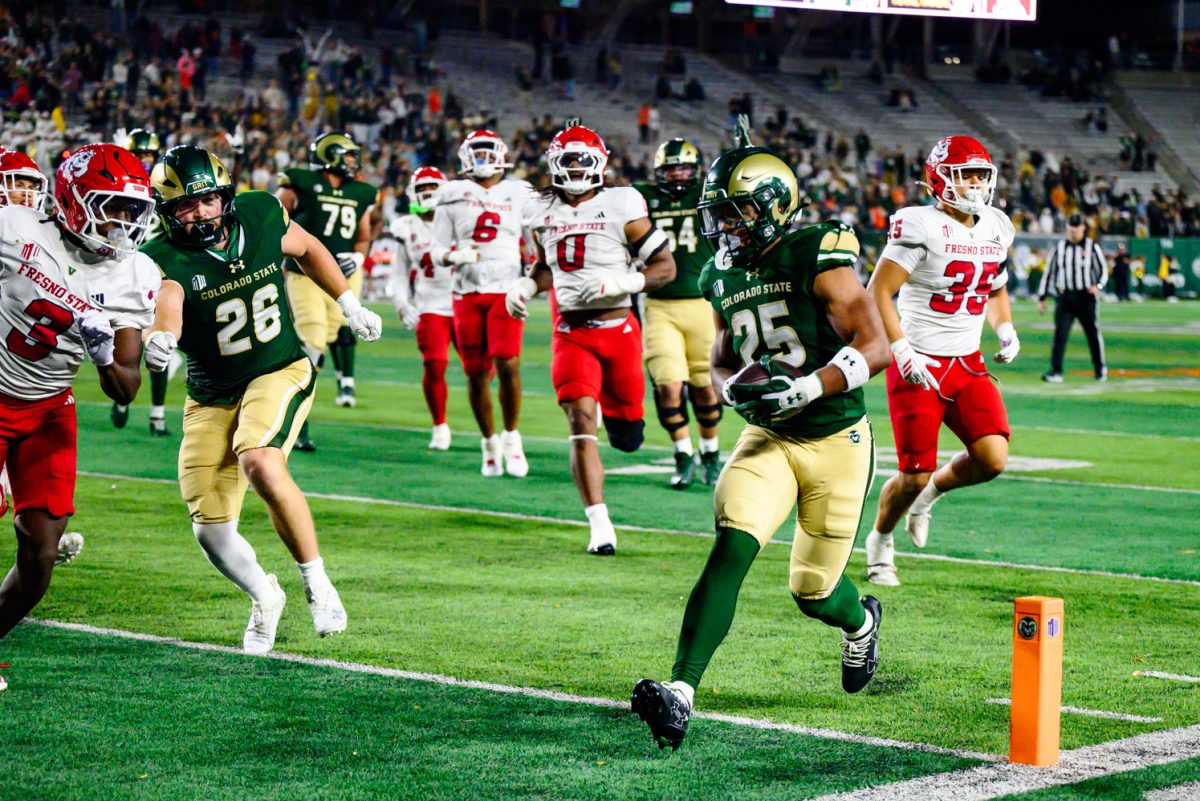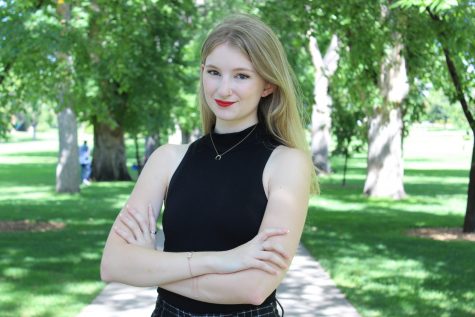
Editor’s Note: ‘Campus in Contention’ is an editorial series by The Collegian staff that examines conflicts in our community surrounding diversity, equity and inclusion and proposes solutions for how we can move forward. A source in this article, Cat Blouch, is an opinion columnist at The Collegian. This article contains media depicting racist slurs and actions and may be triggering to some audiences. Read part one of the series. Read part two of the series.
Anyone that was on campus in fall 2019 likely remembers the semester by one event. A student named Leana Kaplan and three other students were photographed on Snapchat wearing charcoal face masks with the caption “Wakanda Forever,” holding the according arm pose from the movie “Black Panther.” The photo was taken down quickly, but it sent shockwaves through the campus and still has an impact on the culture even today. This was also one of the first truly seen moments on campus where social media showed students its influence on the community.
Although social media is a necessary tool for engaging with the community and spreading information, it has also done a lot of harm, especially on our campus. It raises the question, how does what we do online impact our in-person campus community? Are they beginning to be one and the same? How has social media turned into an unofficial news outlet, and what are the consequences?
One of the first places the news of the blackface incident broke was Colorado State University’s infamous Instagram meme page @colostatememes. With over 17,500 followers, the platform carries undue weight among students and is often the place where students first hear about campus events. News traveled across platforms as the incident took place on Snapchat, was reposted on Instagram and sparked discussions on Twitter and Facebook. Everything happened entirely online, but CSU’s physical campus would never be the same.
Until the University takes the stance that our first priority is to protect students from harm, then we’ll still be in this situation.” –Catherine Knight Steele, assistant professor, University of Maryland
Catherine Knight Steele, former assistant professor of journalism and media communications at CSU and now an assistant professor researching African American culture and new media at the University of Maryland, said what complicates situations like these is the lack of differentiation between online and offline personas.
“We don’t have public and private lives, and we don’t have online and offline personas,” Steele said. “Everything is mixed and tangled in a way that makes these situations very complicated.”
In the age of social media, students have no separation between who they are on their social media accounts and who they are in person and on campus. In 2021, they are even more active on social media than they are on campus.
A look back through the online conversations will show that many students wanted the University to take disciplinary action against the students that posted the photo during that time period. Students took to an Associated Students of Colorado State University senate session to express their disappointment with the students’ actions and the University’s response.

The students did not face disciplinary action from the University because their speech was protected under the First Amendment, according to University officials.
“The University is legally prohibited from taking disciplinary action for student behavior that is constitutionally protected, as was the case in the 2019 incident,” wrote Jody Donovan, assistant vice president for Student Affairs, in an email to The Collegian. “In these situations, the University may seek to engage the involved students in conflict resolution processes such as social justice mediation or restorative justice, as we did in the 2019 incident.”
Many students were upset with the University’s lack of action toward the student, but as Donovan mentioned, posing in blackface is protected under the First Amendment. Donovan said student behavior only moves beyond constitutional protections when they are “direct threats of violence towards a specific person.” That doesn’t take away the impact though, and some argue that the University still could have enacted more discipline within their realm of the students violating the principles of community.
“Until the University takes the stance that our first priority is to protect students from harm, then we’ll still be in this situation,” Steele said.
Fast forward to 2020. An incoming white male student posted racist, homophobic and threatening social media posts online that used a racial slur and promoted violence toward Black people. Again, one of the first places it was reported was on colostatememes, and the posts took the same journey the blackface post did, spreading in CSU’s social media community like wildfire.
This time, however, the University’s response was different. They decided that the posts moved beyond the First Amendment.
“When student behavior goes beyond constitutional protections, such as direct threats of violence towards a specific person, as was the case with the 2020 incident, the University will enact the student conduct process,” Donovan said.
The Student Conduct Code, while not specifically mentioning social media, does say that verbal harassment is not tolerated no matter the student’s location. It then comes into question, however, if the school should create policies for specifically how student speech should be restricted online versus in person. If a student came to campus, stood on The Stump wearing blackface and said “Wakanda Forever,” we have to question if the University would make the same decision. Would it count as a real threat if the student was on campus?
In terms of online and offline communities, David Wolfgang, professor of journalism and media communication at CSU, said we can no longer divorce the two from one another.
“When we look at the way online communities and social media and social interactions online affect people, we can see it in terms of the real emotional and psychological trauma that it puts on the targets and victims of these incidents, especially when we’re talking about hate speech,” Wolfgang said.
The truth is that social media is a part of our campus, and many believe the University should make online principles of community or specifically mention social media in the conduct code to make it clear to students that their personal social media accounts are not entirely exempt from it.
However, some may disagree on if the line gets too blurry between keeping students safe from violent and threatening speech and restricting students’ freedom of speech on their personal social media accounts.
“I think we’re right on the cusp of the entire country having that conversation,” Steele said. “From the government all the way down to high schools who are having to respond to disciplinary issues for things that their students posted online.”
The center of it all
An interesting aspect about all this is not just where these posts originated but the life they took on on social media. In light of the blackface incident in 2019, misinformation spread through the rumor mill about what happened, who was responsible, what the disciplinary action was and what was going to happen next. As mentioned previously, at the heart of both of these incidents was an unlikely source, colostatememes.
View this post on Instagram
The meme page posted on their story and made posts about the incidents, which was some students’ primary source for what happened. While it is good the page holds the power to inform students, it also holds the power to do a lot of damage when misinformed. As an unofficial source with no editors or fact-checkers, there is a lot of room for error.
In January 2021, the page made a post about ASCSU President Hannah Taylor attempting to give herself and her staff a raise. What happened was uproar from ASCSU, claiming misinformation and asking the page to delete the post. Colostatememes deleted the post, saying they did not have all the information and the post was made without the full context.
View this post on Instagram
However, it was later revealed in the senate meeting that Taylor did, in fact, give her staff a raise using discretionary payroll funds because members had lost out on certain pay periods due to the elections being held late. So ultimately, the post was based in truth.
What the situation revealed is the impact that one social media page has on the entire campus and it’s student’s governing body. Chief Justice Peyton Dailey directly messaged the page asking, “Are you ever going to post content with full information, or are you just going to continue to mislead and misinform students with partial information?”
A heated discussion erupted in the comments section of a follow-up post. Some people commented about how ASCSU is often an abrasive space for Black and Indigenous people of color and international students and how the Taylor-Schindler administration has passed little legislation directly for that community.
Director of Community Affairs Kyle Kumjian wrote, “What exactly do you want them/us to do? Write a resolution fighting for U+2 reform for low income students, pandemic assistance, food insecurity programs — do these not help BIPOC and international students?”
To avoid vitriolic comments like this, the co-owner of the page, Cat Blouch said she wants to have a relationship with ASCSU where the page can be used to help with transparency within ASCSU and inform students and avoid heated, misinformed arguments and discussions on the page.
Blouch said Chief of Staff Jasper Sloss even reached out to the page asking if they could have a conversation about working together to do this for students. Blouch said she was open to this but responded asking why it took an incident like the one mentioned for him to reach out and further criticized the communication ASCSU has had with the page. Blouch said she sent her phone number to have a conversation, but Sloss never reached out.

Blouch said what is often frustrating is that the page was never intended to be a news source, yet they face the same pressure and criticisms of one.
“We’ll get (direct messages) about current events within the community or people who want us to endorse certain political campaigns or a lot of stuff with ASCSU.” Blouch said. “They’ll be like, ‘Oh, did you know this is going on?’ That’s how the recent conflict started. We got DMed by a senator about President Taylor trying to put in some sort of policy to give herself a pay raise.”
ASCSU themselves use the page as a way to spread information to the student body, something Blouch said she didn’t expect.
“Ultimately, it’s a meme page, and I don’t think we’re trying to brand ourselves like, ‘Count on us for every single current event going on,'” Blouch said.
Regardless of intention, an Instagram meme page has turned into a news outlet and, based on the comments and direct messages with senators and cabinet members, a place where CSU’s governing body communicates.
As the influence the page carries is realized, ASCSU should understand the things they say online matter, whether it be in a public comment section or a direct message. They are representing the student body, even through their remarks online.
While both the student government scandal and the harassment and hate posts online happened through social media, it’s important to remember that at the end of the day, social media was merely the platform. Many might agree when Steele said, “No medium or platform is responsible for human behavior.”
But that doesn’t mean people shouldn’t be responsible for their behavior on a platform. A possible solution here is for the University to lay the groundwork for online principles of community and conduct and lay out the consequences for violating them.
The University may only be able to go so far in how they restrict and discipline students’ actions on their personal social media accounts, but the fact is they should be treating it no differently than a student standing on The Stump speaking the exact same words. The impact is the same, and students are affected either way.
Members of ASCSU and other student organizations should be aware that their language and actions online are equivalent to their actions in the senate space. For the meme page, they are learning that as a social media account that largely represents CSU’s community, their words often hold the same impact as something reported by a real news outlet.
As the world turns more and more virtual each year, social media has been the place where deep flaws in the diversity, equity and inclusion of CSU have been revealed and discussed. It has also been the place where many problems have been solved and protests have been organized. Social media’s impact and significance will only continue to reveal itself in facets of CSU’s community.
Katrina Leibee can be reached at letters@collegian.com or Twitter @KatrinaLeibee.



